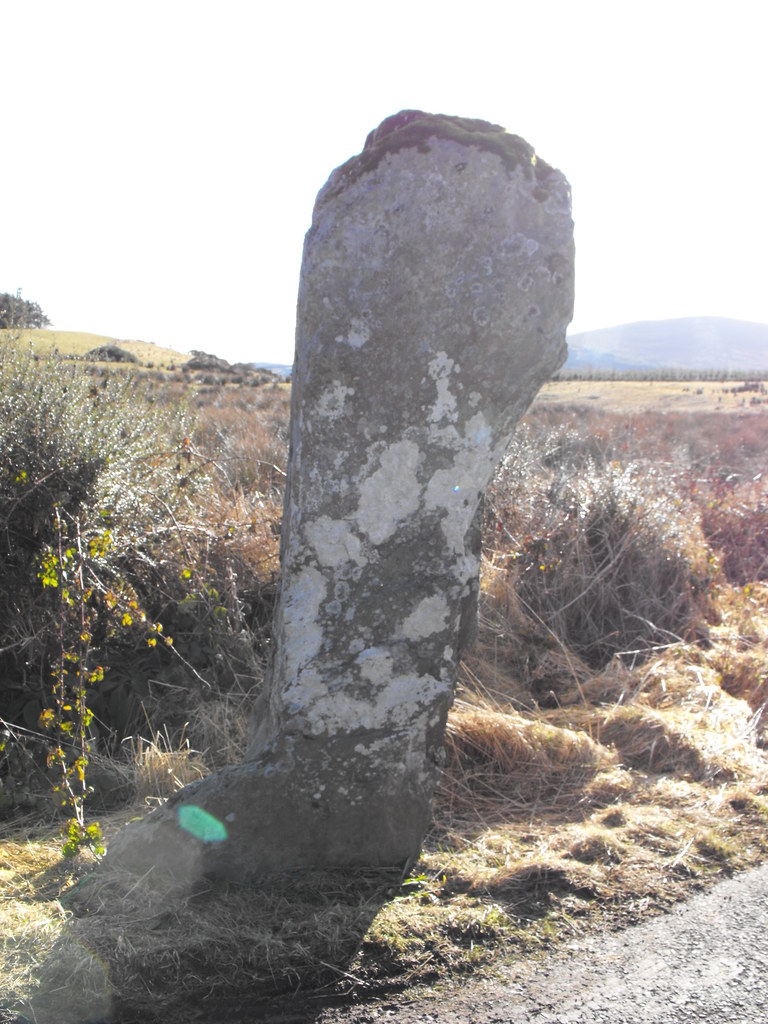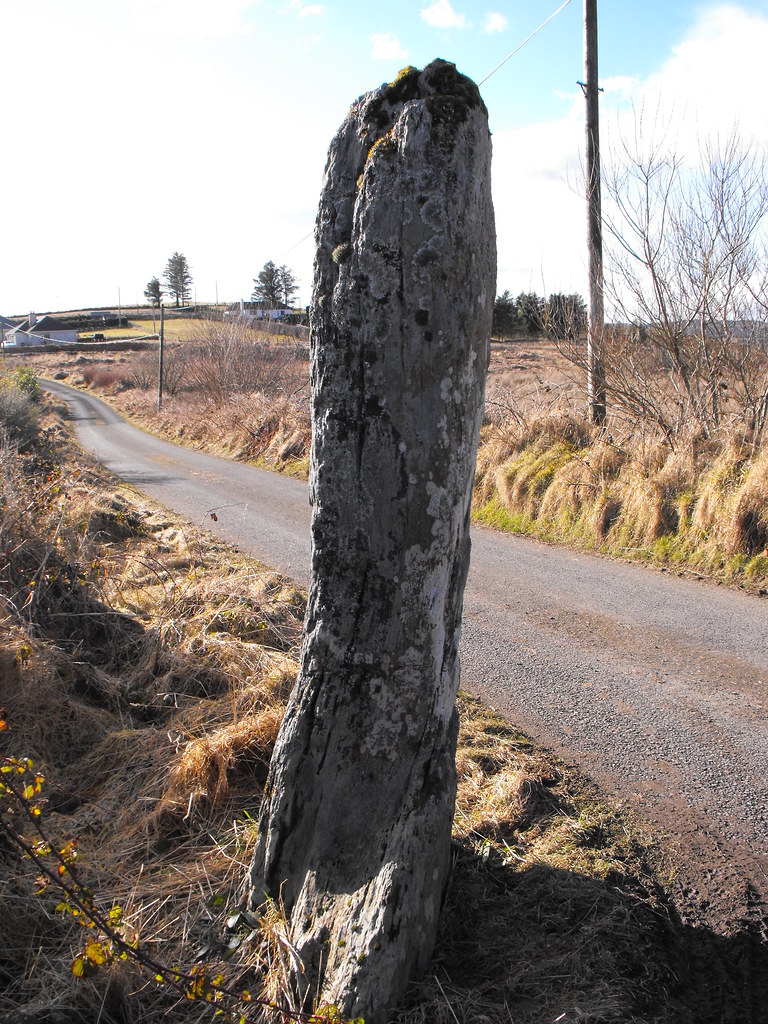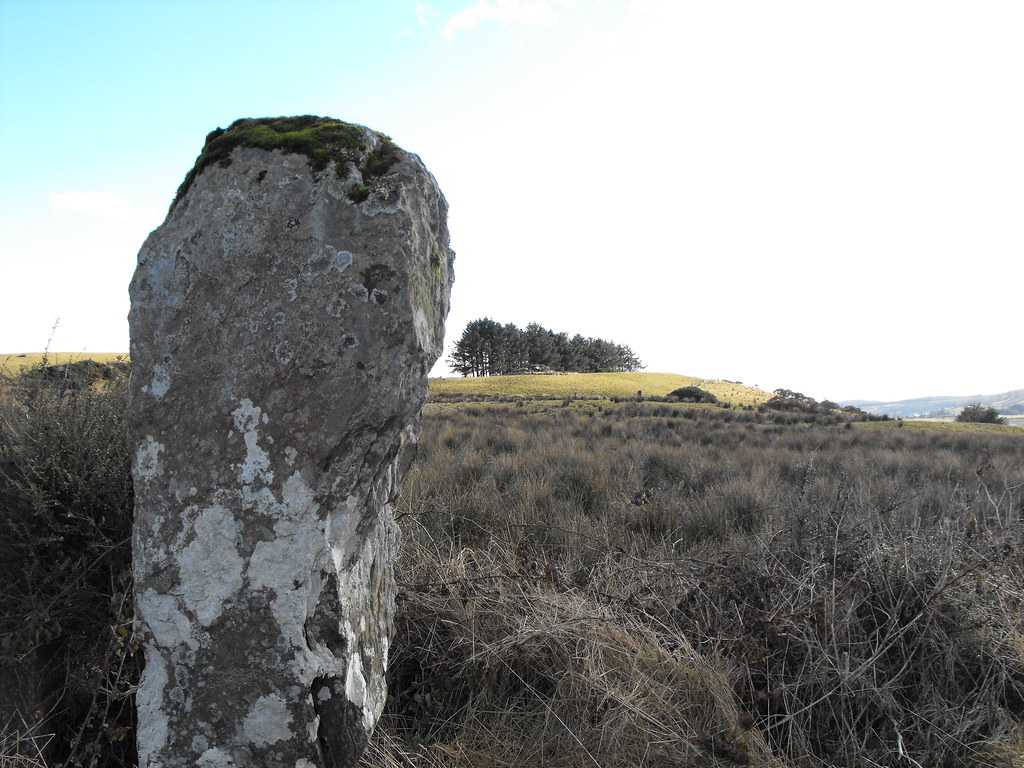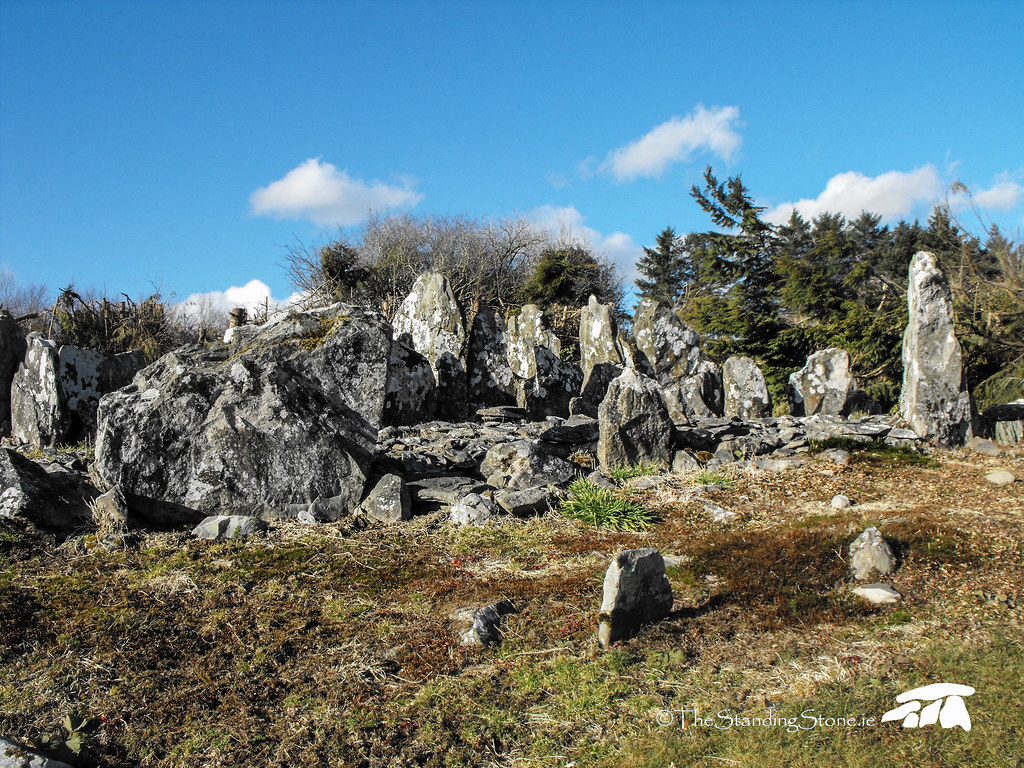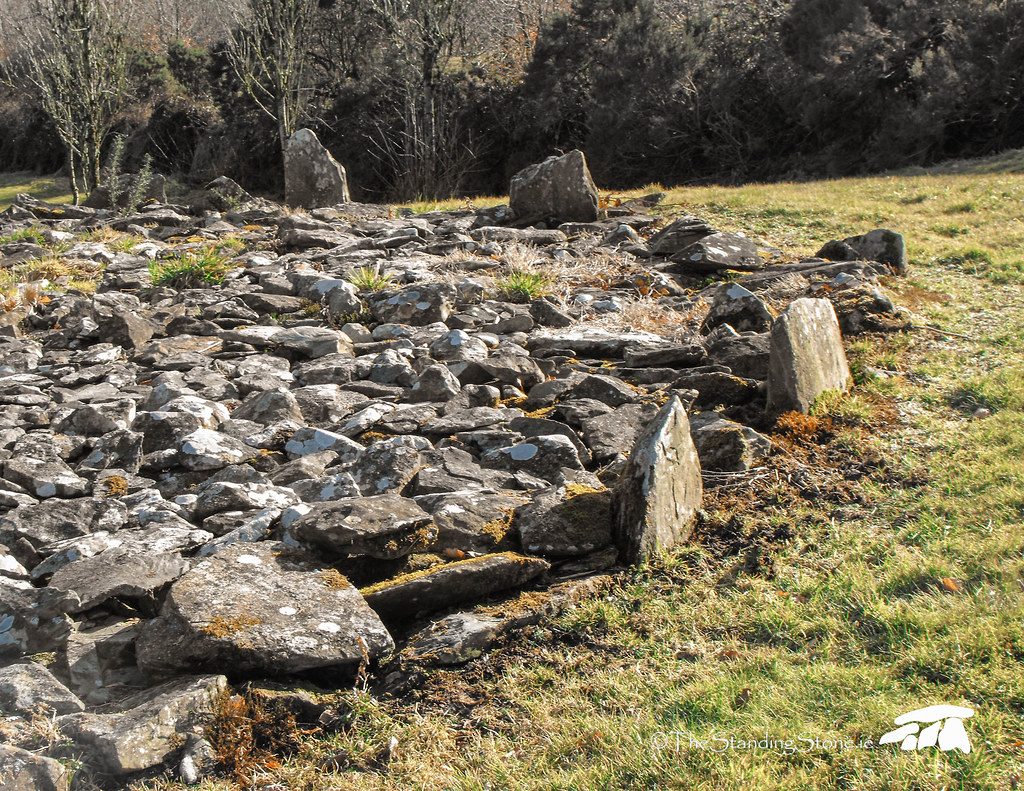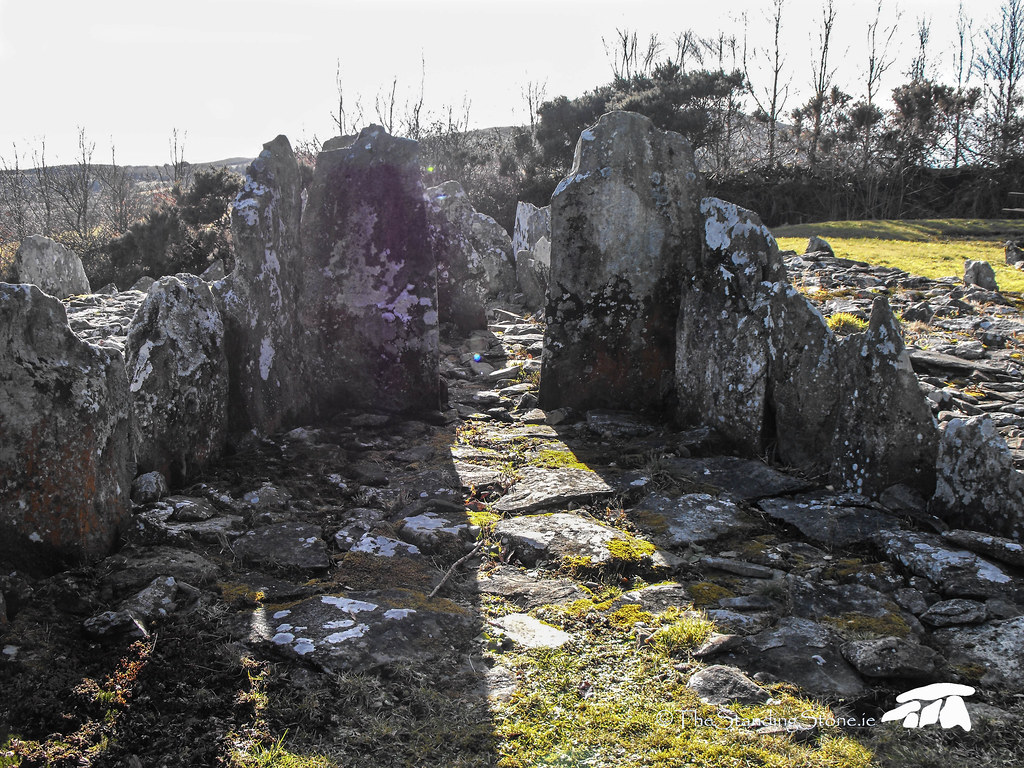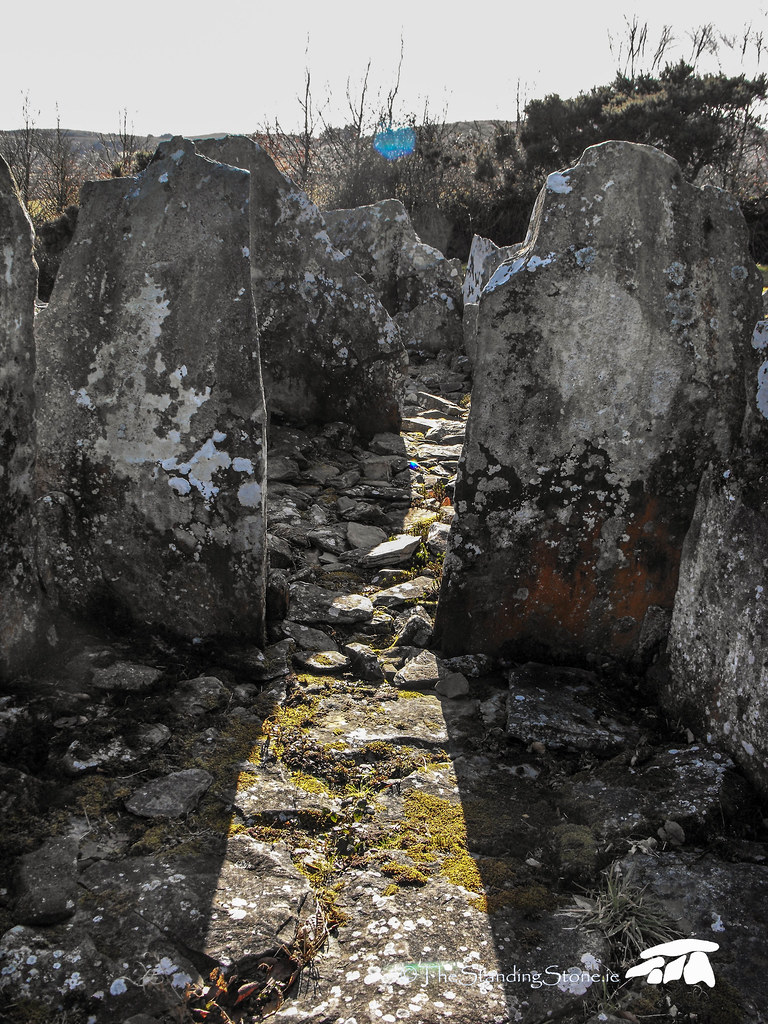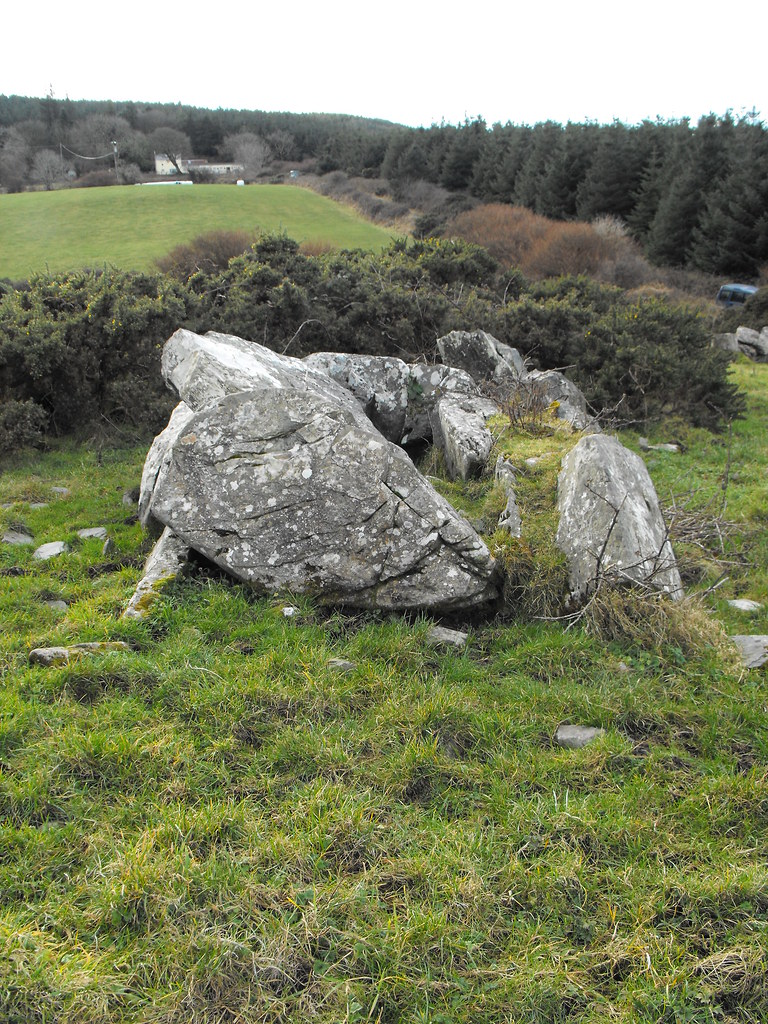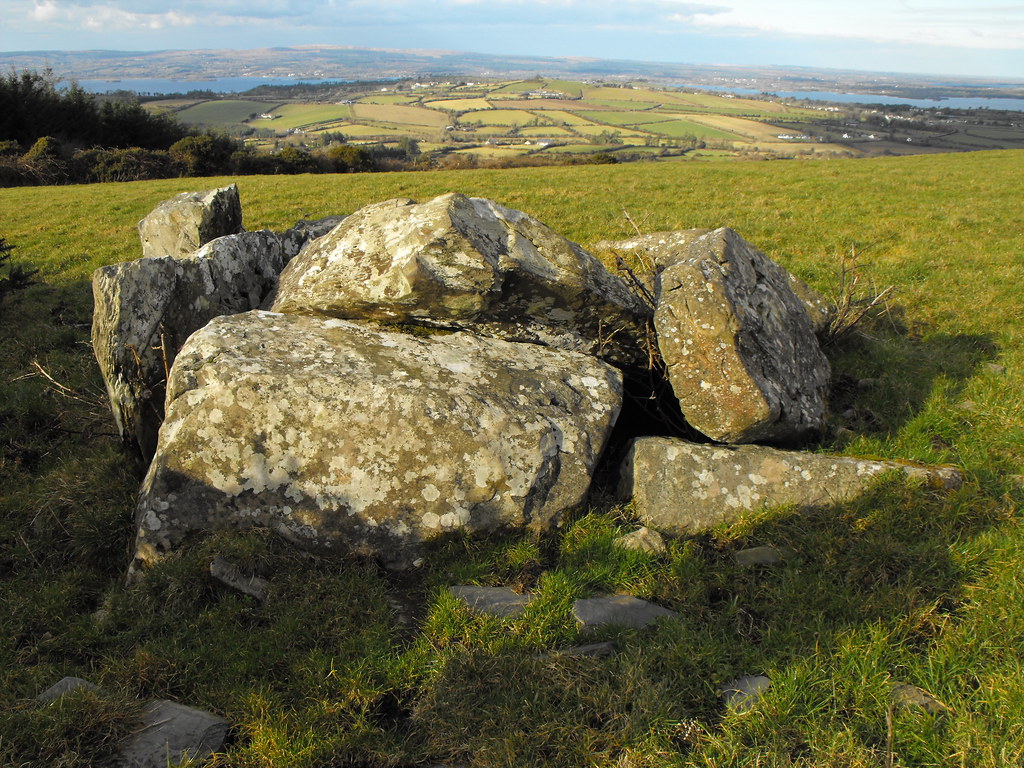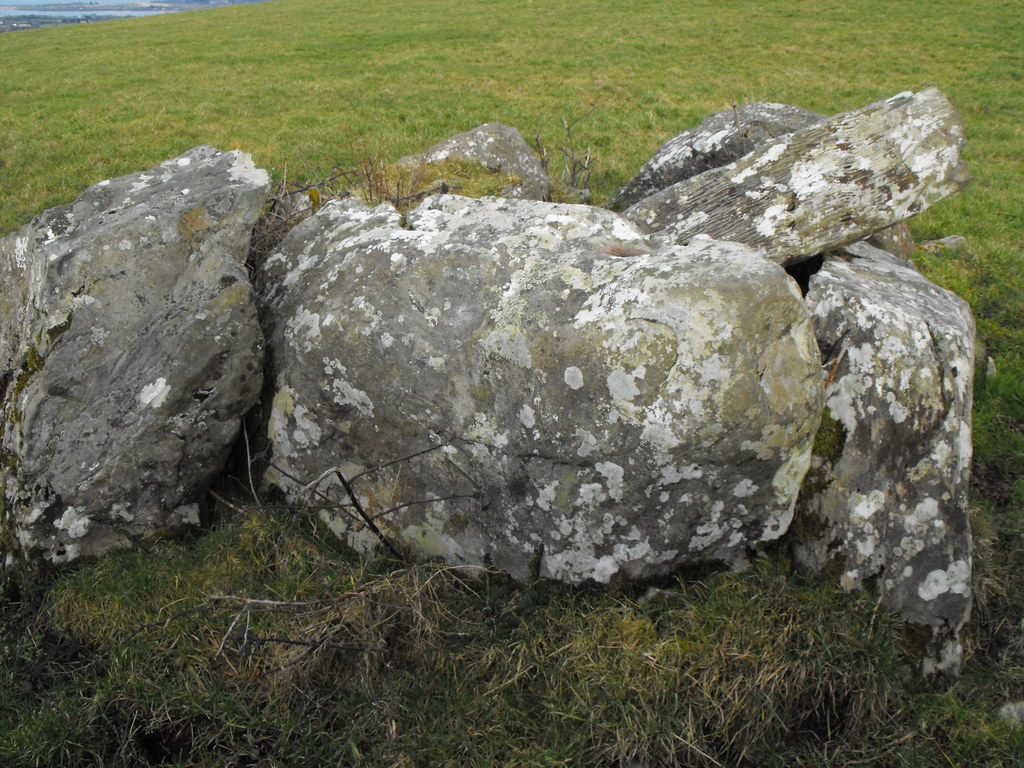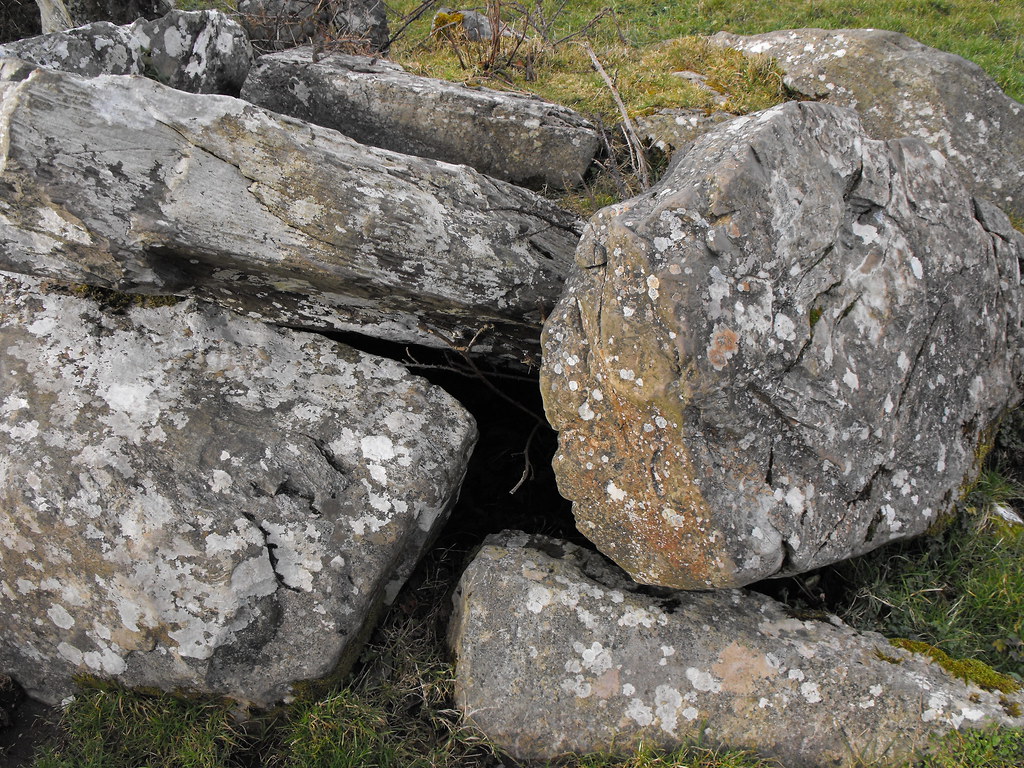OS: R 846 603 (map 59)
Longitude: 8° 13' 40.06" W
Latitude: 52° 41' 37.3" N
See map at the bottom of the page.
Description and History – This is a great standing stone and it’s amazing that it’s still here. It juts out right onto the road and, although it’s a quiet country road, it’s a miracle that nothing has hit it. The only place to pull in to see it this is right next to it and I think it’s only a matter of time before someone backs their car into it. It stands about 2m high and is connected to Diarmuid and Grainne. Diarmuid carried this stone on his back and Grainne carried a smaller one, which is now missing. However, there is another standing stone in this townland with a fallen stone nearby and I think that the myth may be referring to these stones instead (I need to get out and see these). This stone is very close to a nearby wedge tomb and I’m assuming that the stone was placed here because of the tomb and may be related to it in some way. This is a great stone to go and see.
Difficulty – Easy to spot, just don’t knock it over.
For more sites in Co. Tipperary, click here.
For more standing stones, click here.
Looking towards the nearby wedge tomb, barely visible against the trees.
View The Standing Stone in a larger map


